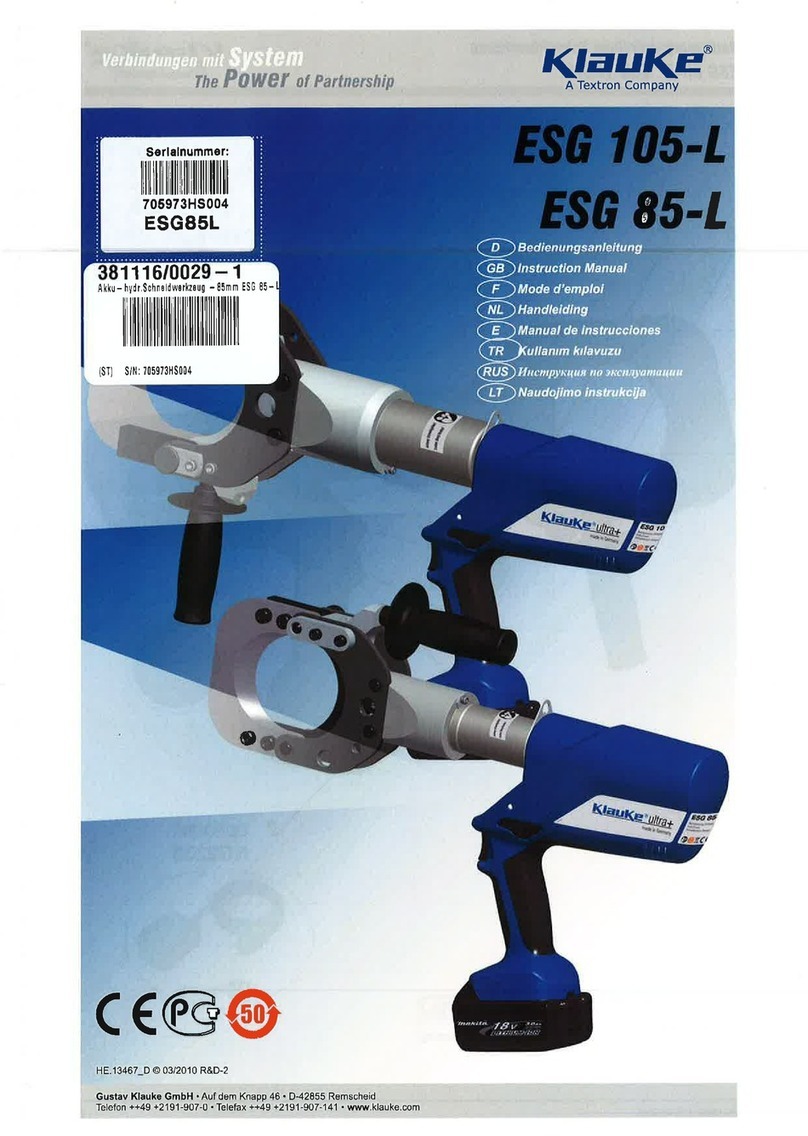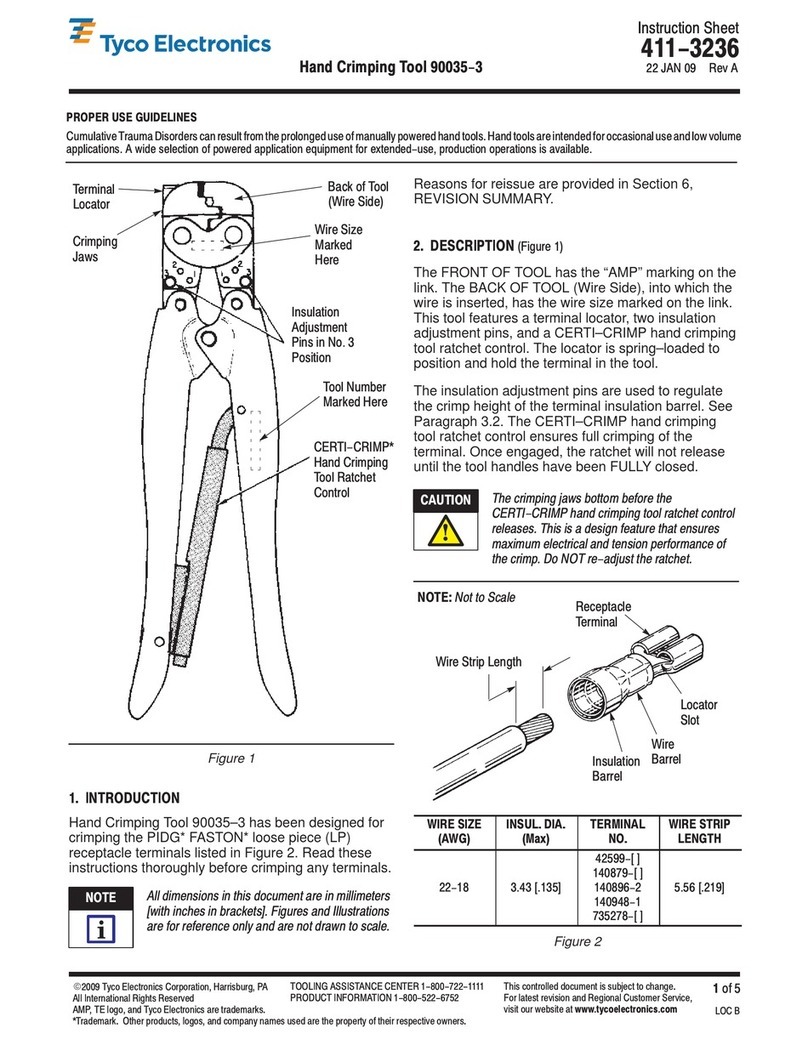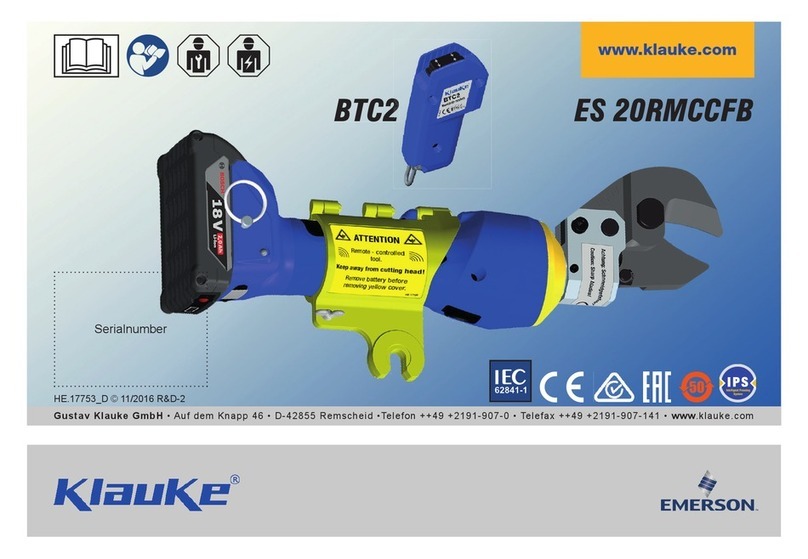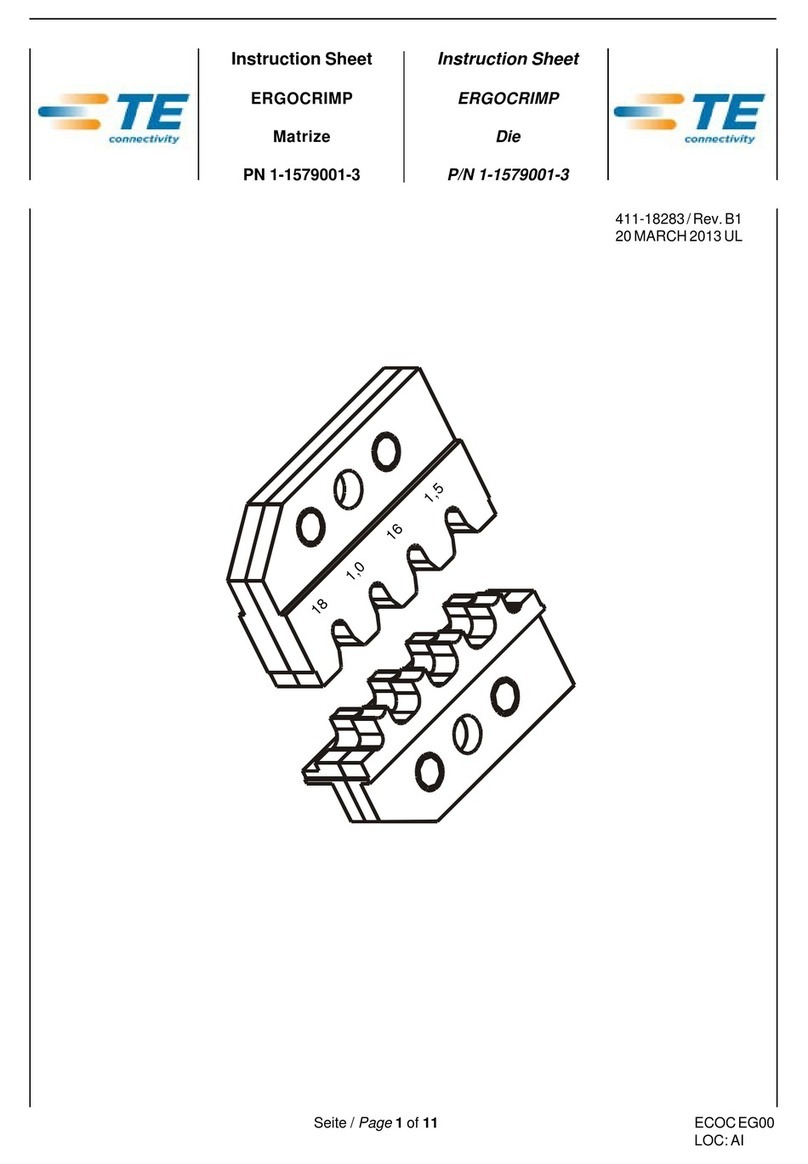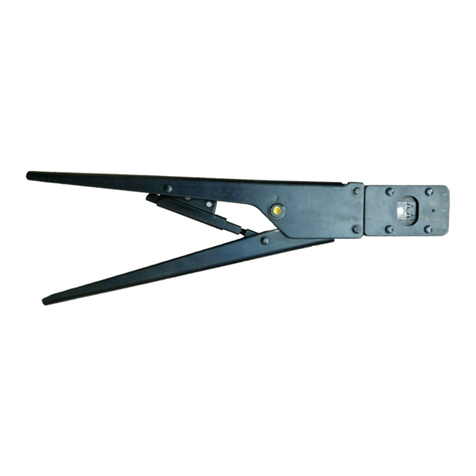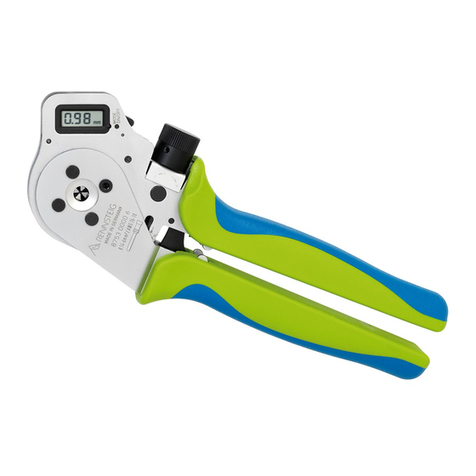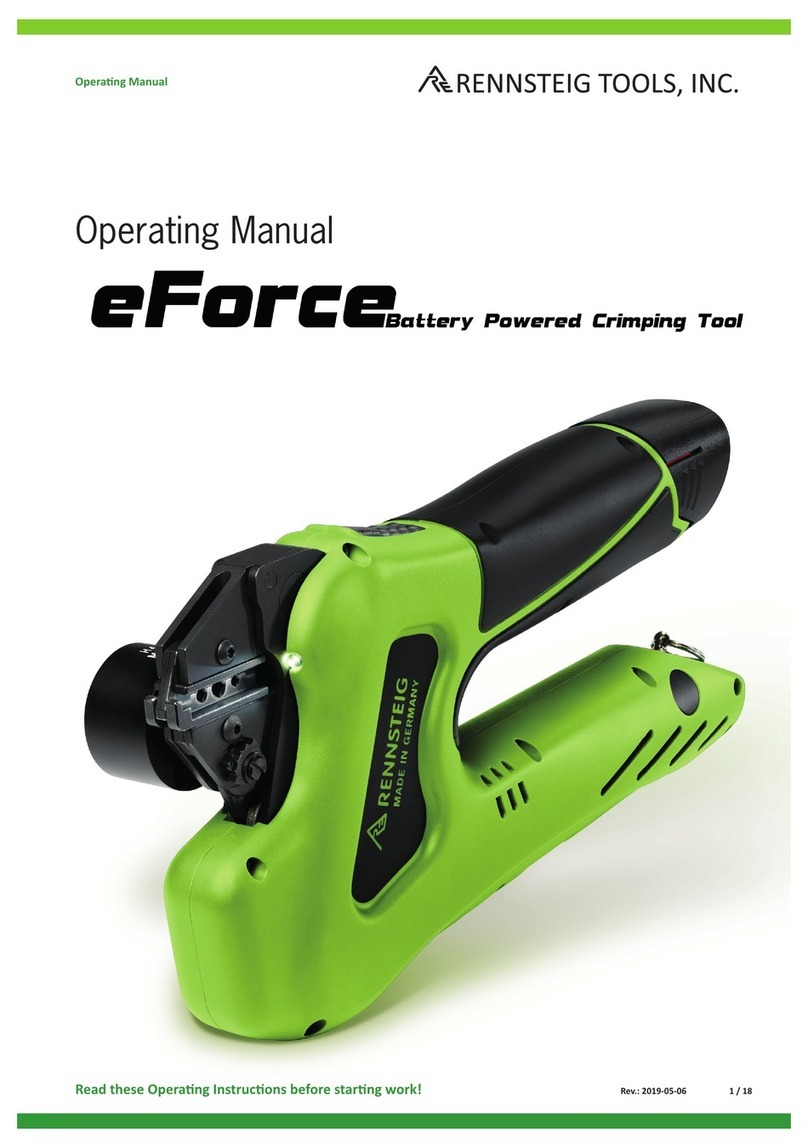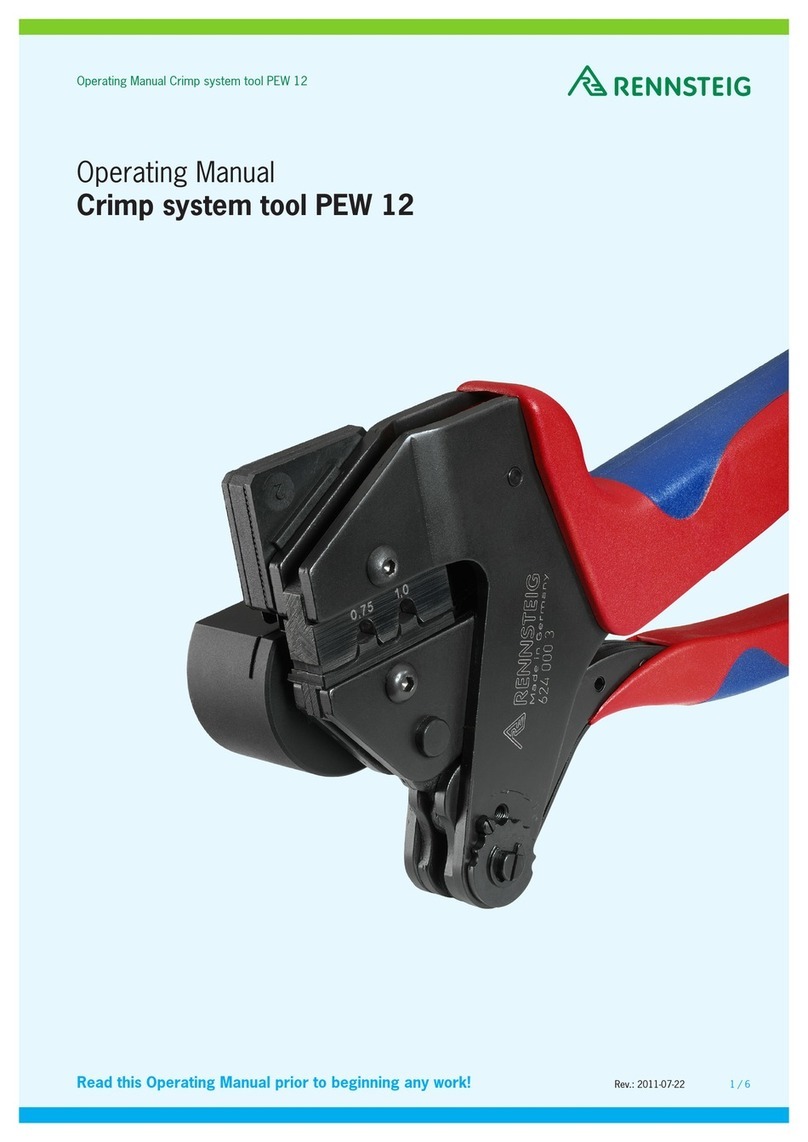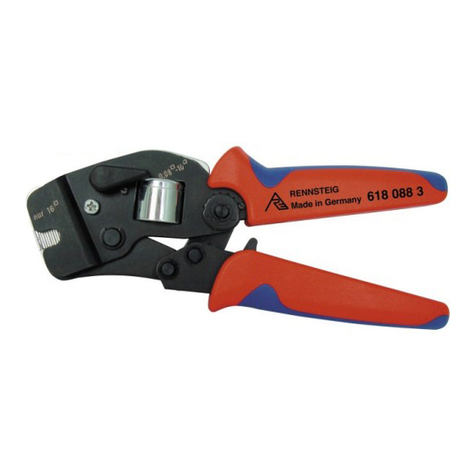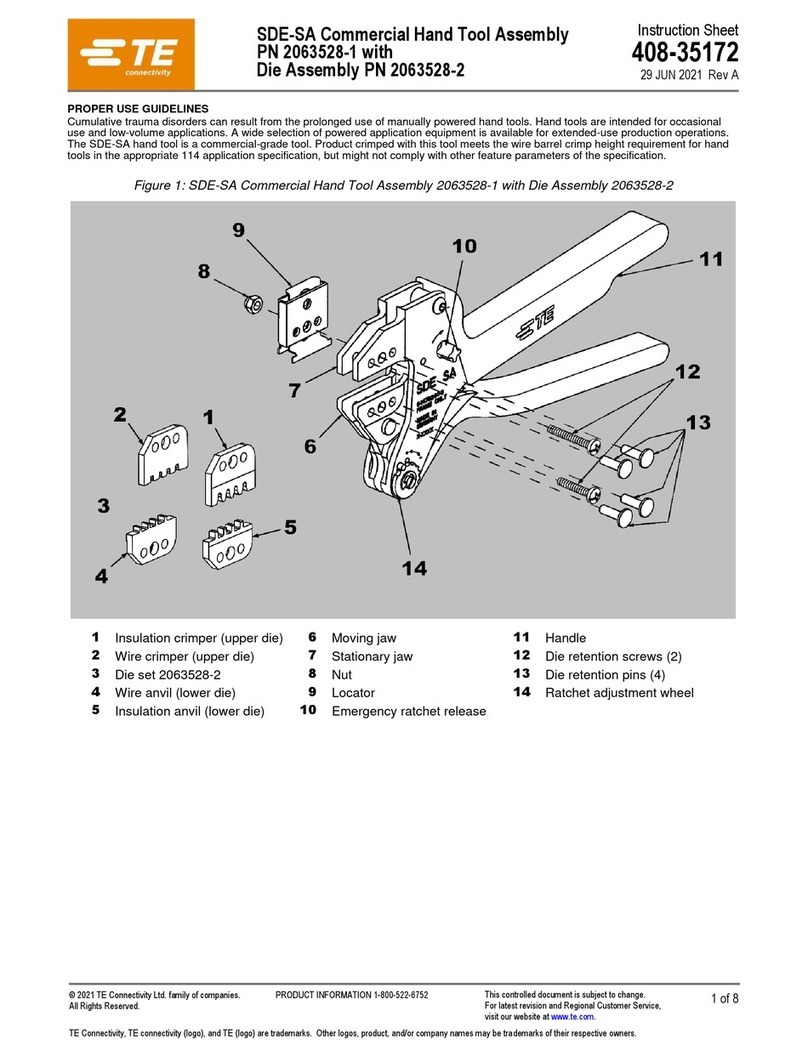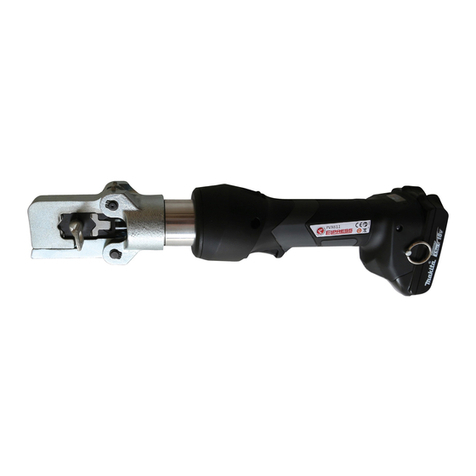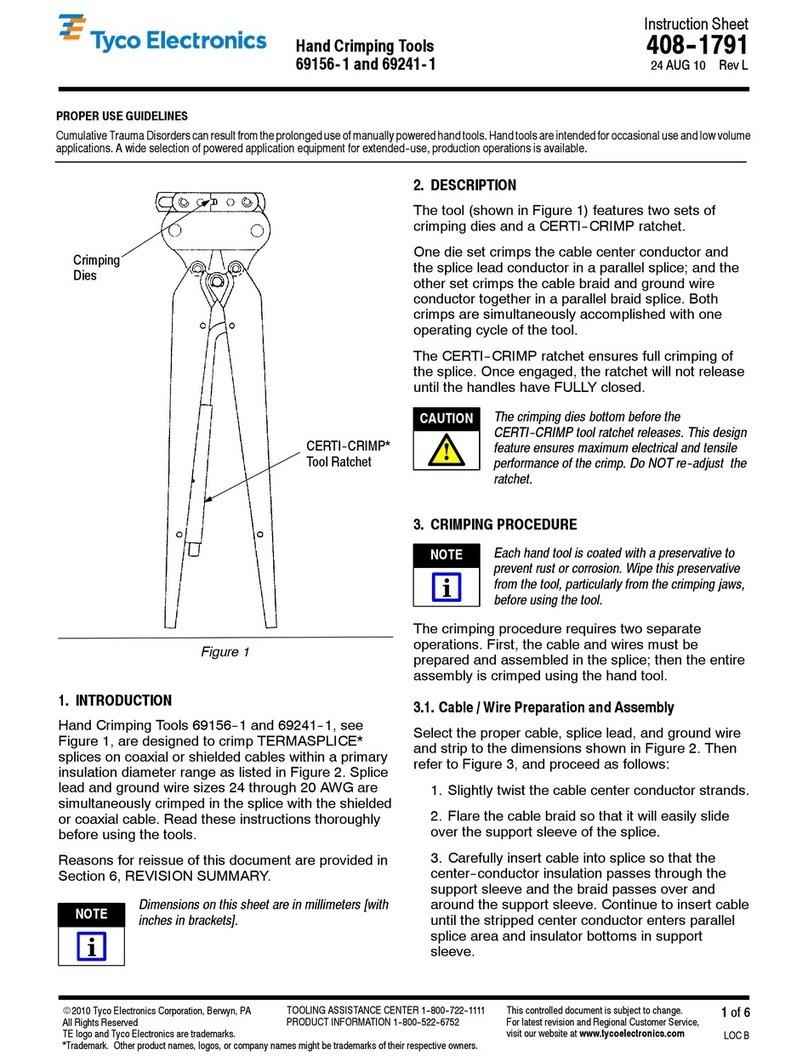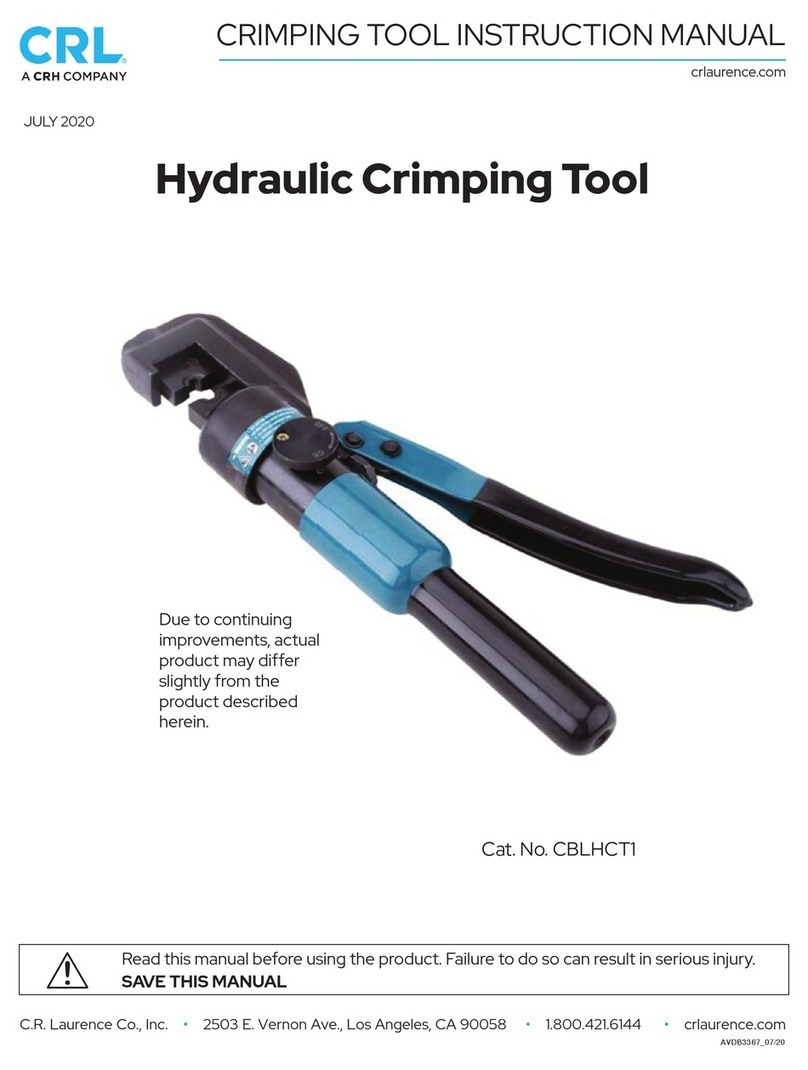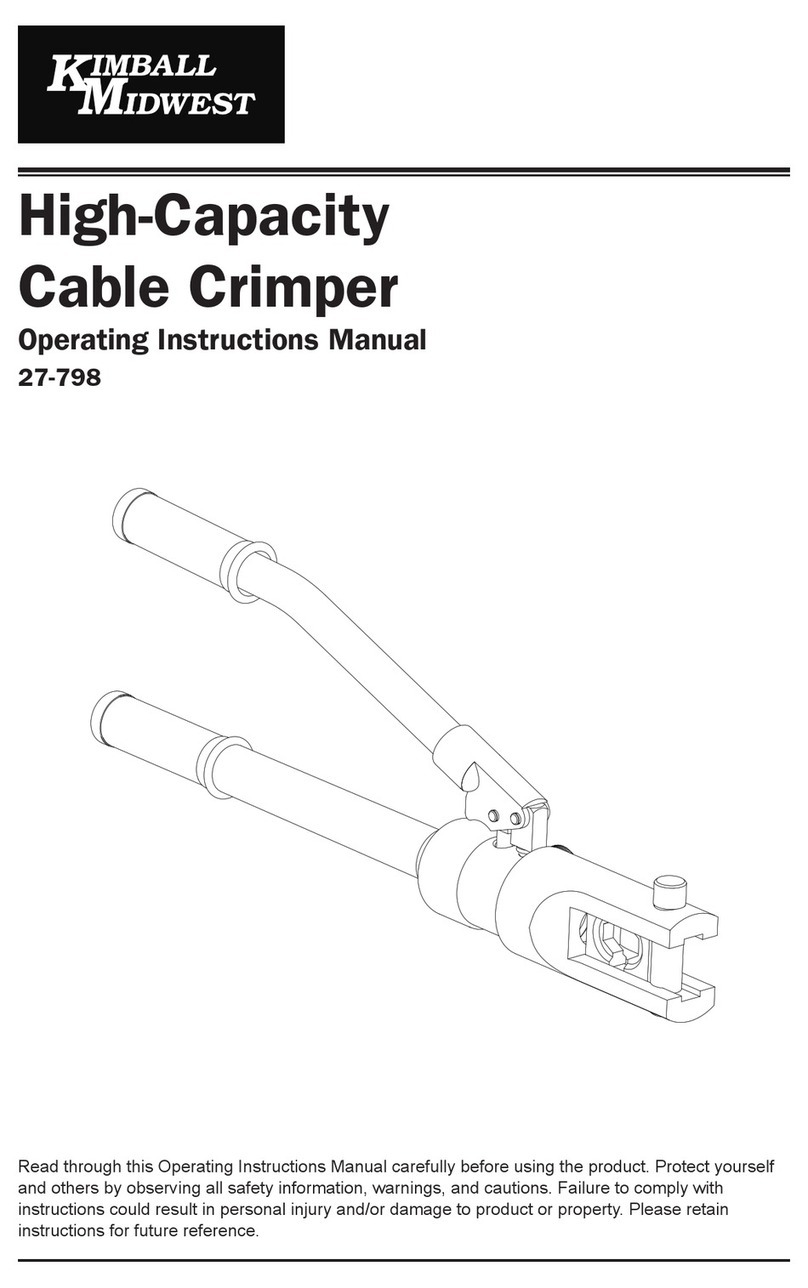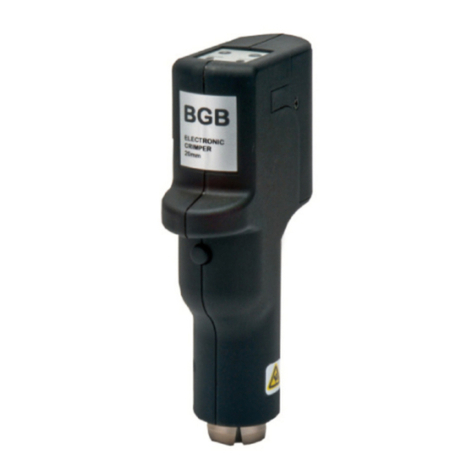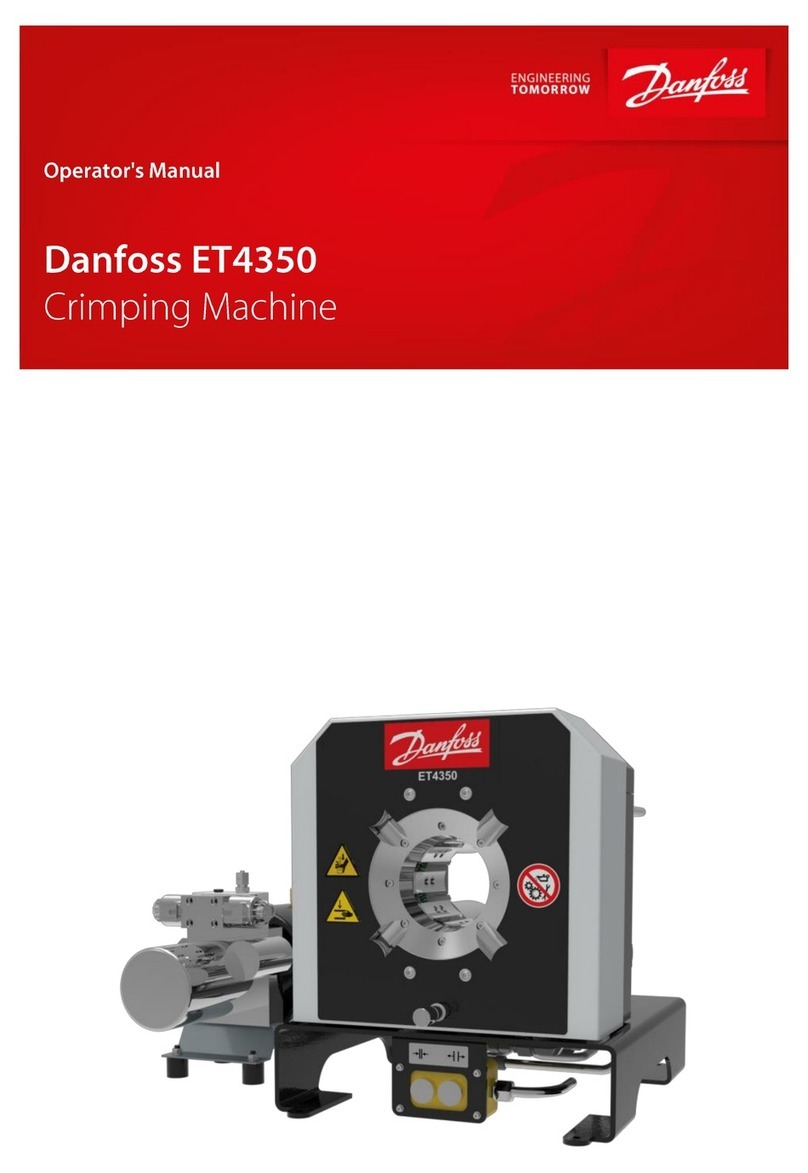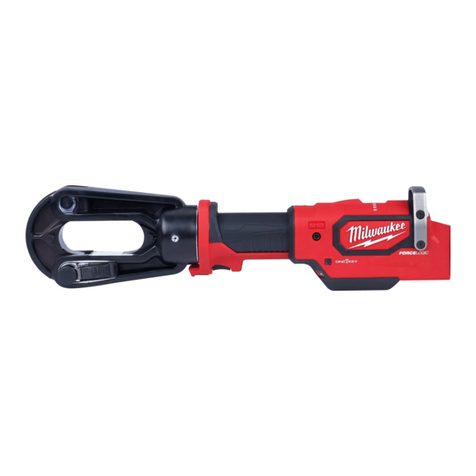
Bedienungsanleitung Zangen für die Bearbeitung von polymeren Lichtwellenleitern
Rev.: 2017-03-13 7 / 9
DE
Kabelführungsnut 1
· Kabel in Kabelführungsnut 1 zum Schneiden einlegen und die Zange
bis zur letzten Raststufe schließen.
· Schwenkhebel (nicht im Bild) in Pfeilrichtung ziehen, bis der Schnitt
erfolgt ist.
· Schwenkhebel wieder in die Ausgangsposition bringen.
· Zange bis über die letzte Raststufe schließen, so dass die
Zwangsverriegelung der Zange freigegeben wird und sich diese
selbständig öffnet.
· Kabel in die Kabelführungsnut 2 der Abisolierstelle bis zum
Festanschlag einlegen.
· Zange bis zur letzten Raststufe schließen. Die Zange leicht entspannen
(nicht öffnen) und das Kabel seitlich und gerade aus der Zange ziehen.
· Zange bis über die letzte Raststufe schließen, so dass die Zwangs-
verriegelung freigegeben wird und sich die Zange selbständig öffnet.
· Kabel aus der Kabelführungsnut 2 entnehmen.
· Ggf. Isolationsrest mit geeignetem Werkzeug aus der Kabelführung 2
der Abisoliereinrichtung entfernen.
· Den zu verarbeitenden Toslink F05 Stecker in die Steckeraufnahme
einlegen und durch Drehen des Klemmstücks um 90° fixieren.
· Vorbereitetes LWL-Kabel in den Stecker bis zum Anschlag einlegen.
· Zange bis über die letzte Raststufe schließen (Zange öffnet
selbständig).
· Vercrimpten Stecker entnehmen.
D.)
Abisoliereinheit mit festem
Anschlag, Kabelführungs-
nut 2, oberem und unterem
Abisoliermesser
Klemmstück zur Kontaktfixierung
Crimpeinheit mit
Crimpstempel und
Kontaktaufnahme
Kabelführungsnut 1
mit integrierten
Anschlag
· Kabel in die Kabelführungsnut 2 der Abisolierstelle einlegen
(Abisolierlänge so wählen, dass mindestens 12 mm abisoliert
werden).
· Zange bis zur letzten Raststufe schließen, so dass das Kabel exakt
eingeschnitten ist.
· Zange leicht entspannen, aber nicht öffnen und das Kabel gerade
seitlich aus der Zange ziehen.
· Zange bis über die letzte Raststufe schließen, so dass die
Zwangsverriegelung freigegeben wird und sich die Zange selbständig
öffnet.
· Kabel aus Kabelführungsnut 2 entnehmen.
· Ggf. Isolationsrest mit geeignetem Werkzeug aus der Kabelführung 2
der Abisoliereinrichtung entfernen.
· Zum Schneiden das Kabel in Kabelführungsnut 1 bis zum integrierten
Anschlag einlegen und Zange bis zur letzten Raststufe schließen.
· Schwenkhebel in Pfeilrichtung ziehen, bis der Schnitt erfolgt ist.
· Schwenkhebel in die Ausgangsposition bringen.
· Zange bis über die letzte Raststufe schließen, so dass die
Zwangsverriegelung der Zange freigegeben wird und sich diese
selbständig öffnet.
· Kabel entnehmen.
E.)
Kabelführungsnut 2
oberes / unteres
Abisoliermesser
